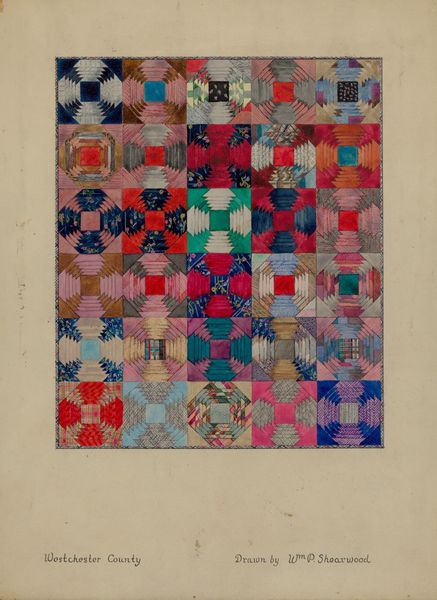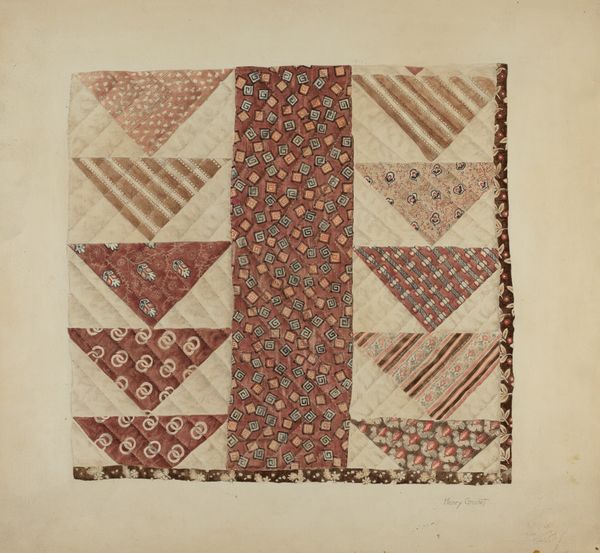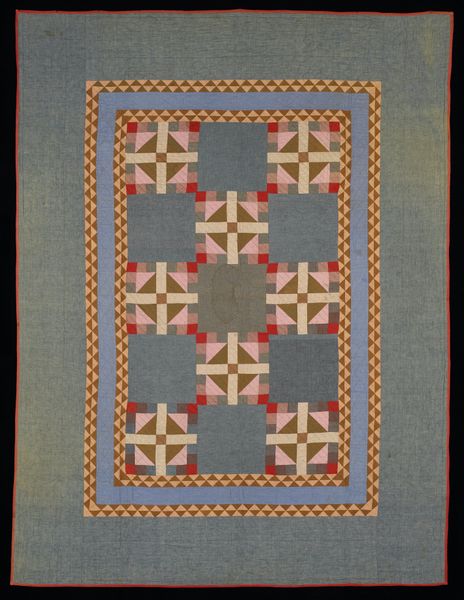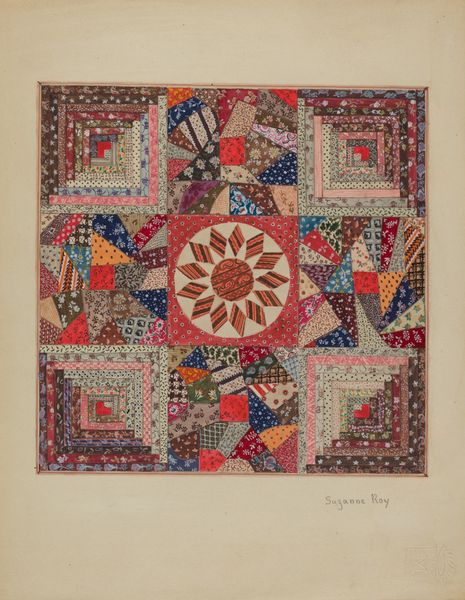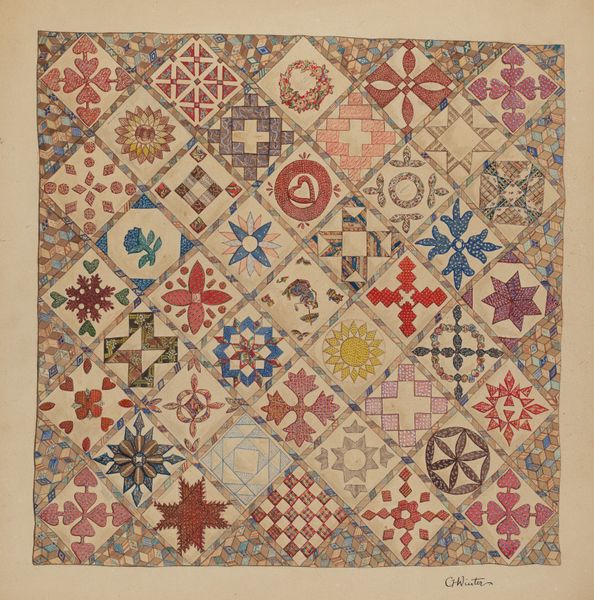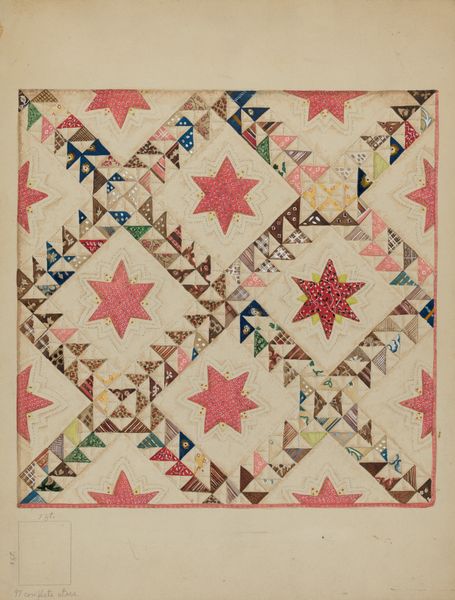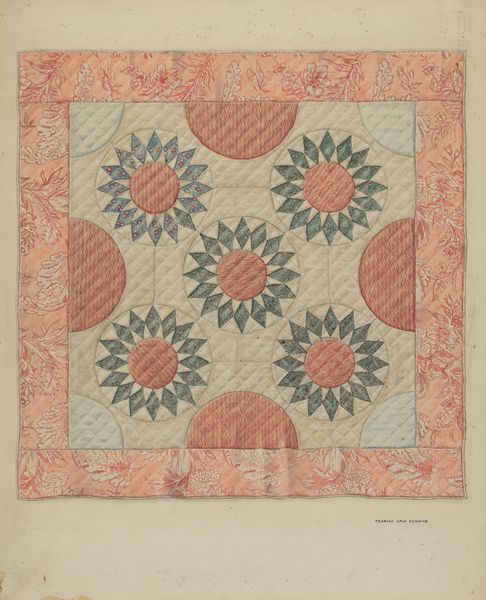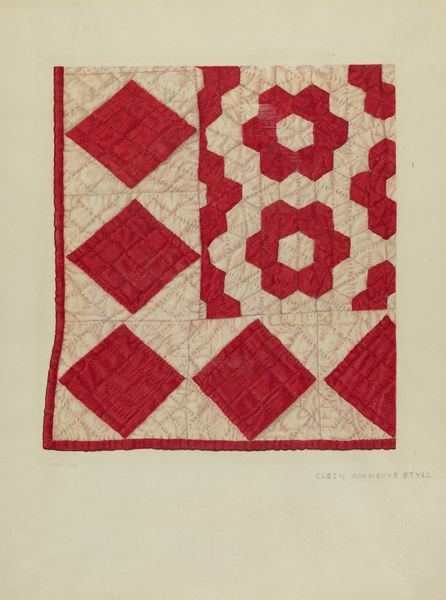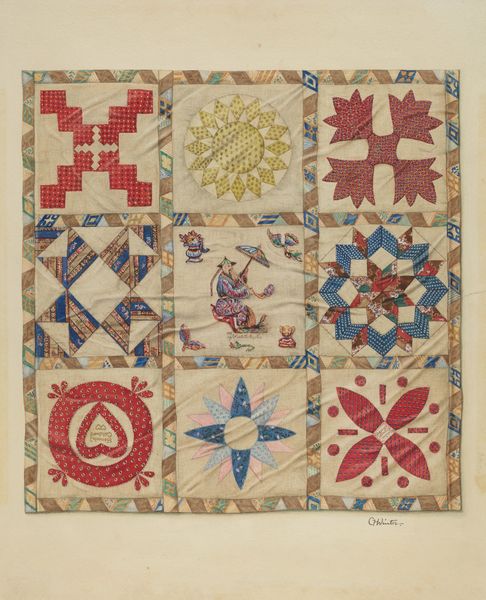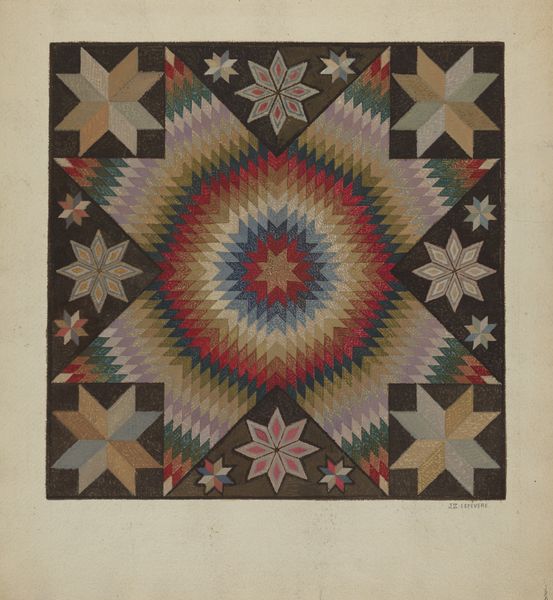
textile
#
folk-art
#
muted colour palette
#
textile
#
folk-art
#
geometric
#
pattern repetition
Dimensions: overall: 29.5 x 22.4 cm (11 5/8 x 8 13/16 in.)
Copyright: National Gallery of Art: CC0 1.0
Curator: Let’s discuss this intriguing "Patchwork Crib Quilt," estimated to have been created between 1935 and 1942. Editor: It immediately strikes me as muted and incredibly tactile, even in this two-dimensional rendering. There’s a definite sense of comfort conveyed by its geometric forms, repeated, creating patterns. Curator: Quilts like these weren’t just utilitarian. They tell a story about resourcefulness and community, particularly during times of economic hardship. These textiles became important family heirlooms, with a significant impact on social groups and familial practices in the US. Editor: Exactly! The piecing together of scraps reflects a powerful engagement with materiality. The labor involved transforms discarded fabric into something beautiful and functional. Were the resources used in quilting considered part of broader making/mending practices, then? Curator: Absolutely. And quilting bees – gatherings where women collectively produced these quilts - functioned as key social and economic exchanges, bolstering women’s community bonds. There is even some connection to art-historical painting through techniques of ‘collage’ and assemblage that allow quiltmakers to combine scraps into surprising configurations, echoing what’s going on in Modernist studios! Editor: It's fascinating how folk art, especially pieces like this, can challenge these divisions between “high” and “low” art, underscoring the cultural value embedded in the handmade and highlighting the creativity and craft inherent in domestic spaces. Curator: Quilts were powerful outlets of creative expression when fewer outlets were afforded. Consider how patterns carry specific meanings, almost like a secret language passed down through generations. It shows resistance. Editor: I am fascinated by the level of skill and time these quilts require, all pointing to deep meaning embedded within textiles. It brings to question ideas about commodity fetishism or craft in the information age. Curator: Yes! Hopefully, viewing "Patchwork Crib Quilt" helps our listeners appreciate the craft behind it. It also pushes our perceptions beyond seeing quilts merely as folk craft but also valuable historical documents of resilience. Editor: Precisely. It makes you ponder all the personal narratives woven into its threads. I now see how much richer it becomes when we discuss this particular "Patchwork Crib Quilt", its history, its physical creation, and most of all, how relevant they continue to be as social, cultural and artistic forms of artmaking!
Comments
No comments
Be the first to comment and join the conversation on the ultimate creative platform.

